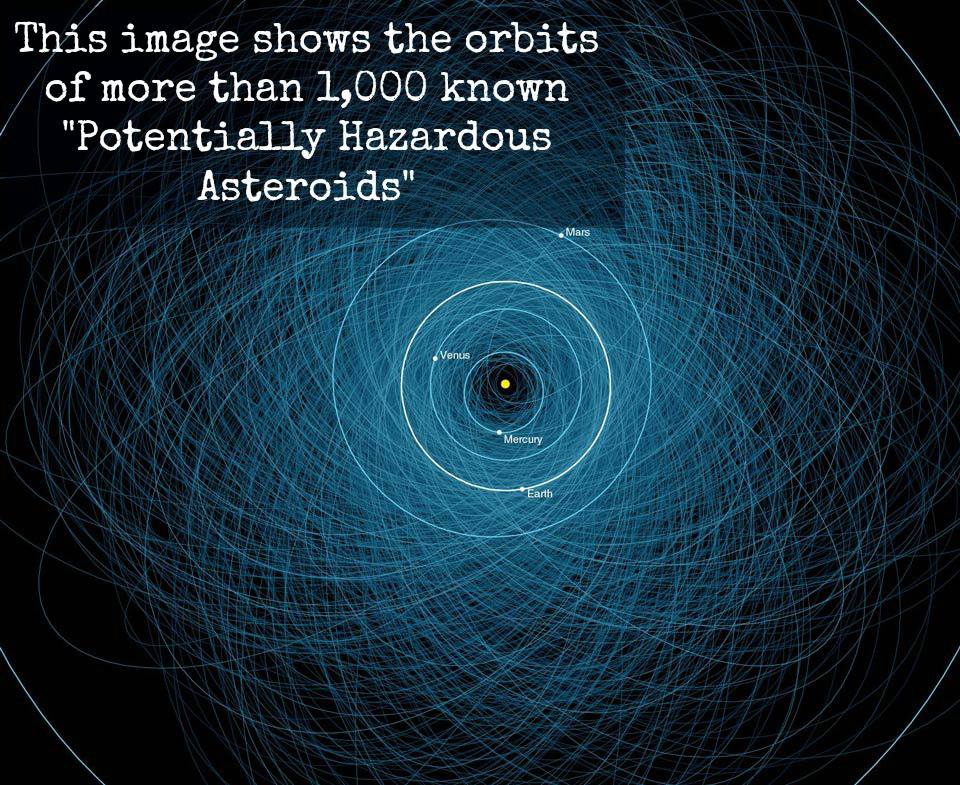

The most underrated threat to our planet might be impact events that threaten our small world. Most meteors and asteroids may be incredibly small; however, even the largest are discreet and almost undetectable until it’s too late to do anything about them — a situation that played out just last year, with the Chelyabinsk Meteor in Russia. If that impact didn’t open your eyes to the danger of these objects, perhaps this newly released image will.
NASA put together this graphic depicting the orbits of more than 1,400 Potentially Hazardous Asteroids (PHAs), which could pose some sort of a threat to Earth. In order to make this list, the known asteroids must meet a stringent list of requirements, which include its size (at least 460 feet [10 meters] wide), its orbital trajectory,and the relative distance it might pass from Earth. In this case, they must pass within 4.7 million miles (7.5 million kilometers) of Earth to make the list.
Keeping that in mind, only a small number of the marked asteroids are considered mildly dangerous, but by continuously tracking said objects (something NASA has been doing since the inception of the Near-Earth Object program), at least we can develop some semblance of a plan to combat a potentially life-shattering asteroid (it isn’t as if, at this point, we could do too much about it even if one were set to crash into Earth, but still).
Furthermore, it should be said that while this image does look kind of daunting, most of the lines showing the orbits have been exaggerated in order to make them perceptible to us. David Szondy, from gizmag.com, notes that “On this map, a line thousands of miles wide would be much too thin to be seen. That’s like looking at a map from London to Edinburgh and seeing the M1 motorway depicted as wide enough to engulf Northampton.”
For more information on NASA’s Near-Earth Objects catalog, visit this website which allows one to explore an interactive map that contains the orbital characteristics of several collision candidates: http://neo.jpl.nasa.gov/